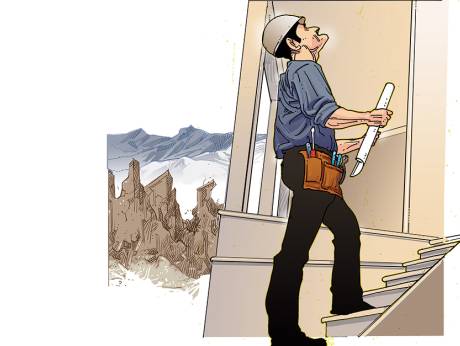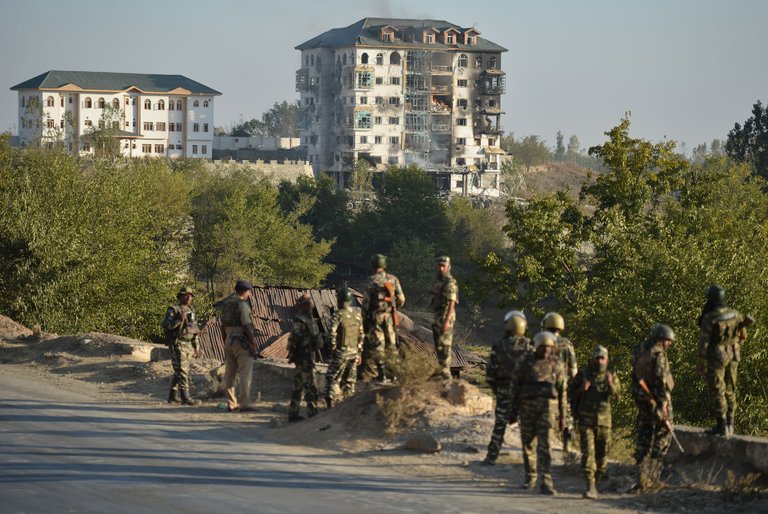- Years of Nato-Isaf actionhave not produced the desired military result, but nurtured some precious stability
Gulf News
Francis Matthew

After 15 years of Nato and other international intervention in Afghanistan, the people in the country see much more hope for their future. There has been a powerful impact for good, despite the obvious failures caused in large part by Nato-International Security Assistance Force’s (Isaf) floundering political missions, as Washington and others changed their minds, and in part by the deep corruption and failures of Afghan governance.
In late 2012, I stood on the top of a tower in an old Afghan fort built with mud bricks. The small fort was the command post of a vast American Army camp a mile south of Gardez, the capital of Paktiya Province in the east of Afghanistan, bordering Pakistan. The region had been in the heart of the fighting and across the flat valley plain to the south were the high mountains where Nato had launched Operation Anaconda in 2003 against the Taliban.
But looking north to the town, the growing prosperity and a new focus on economic development were obvious. It was easy to see the small centre of the battered old buildings of pre-Nato Gardez and it was clear that the town had more than doubled in recent years under Nato-Isaf security. People had come back and built their homes and were looking for work. Business was booming and a university had started in a city that had been a hot bed of insurgent activities.
I met Naiz Mohammad, the district governor of Sayyid Karam, a middle-sized district within Paktiya Province just north of Gardez, and his main concerns at the regular coordination meetings between the Americans and his staff members were very practical issues like tracking down the delivery of solar panels to 400 family homes and rebuilding a regional road. After one such meeting, he told me that “after 2001, when the Taliban left, the Coalition found itself in charge of a country where there was no government in Kabul, no authority, and deep chaos. With the Coalition, hope came back to Afghanistan”.
It is hard to understand the scale of the disaster that struck Afghanistan with the collapse of the monarchy in 1973, the Communist takeover in 1978, which led to a Soviet-backed government that fought the CIA-supported Mujahideen for more than 10 years, leaving one million dead and producing six million refugees. A period of warlords followed with yet more millions being killed or fleeing the country, till the Taliban took over in 1994, imposing their brutal view of government, till they were toppled by the Nato-Isaf forces in 2002.
The American and other forces walked into a country that had not had any stable government for more than 30 years and in the absence of any local authority found themselves running the civil administration as well as fighting the Taliban. The Coalition forces were divided up to manage different areas of Afghanistan, and followed their own plans, so the French might focus on rebuilding hospitals, but next door, the Norwegians would be looking at roads, while the American and British in neighbouring areas might be doing something else. This dissipation of efforts was compounded by a decade-long confusion over what Nato-Isaf’s mission was. At first, they went into Afghanistan to eradicate Al Qaida and to remove the Taliban government that supported Osama Bin Laden. They succeeded in beating the Taliban, but Al Qaida proved to be too stubborn and continued to survive. The forces were then put onto reconstruction work (which was the sort of activity whose results I saw in Gardez). Then they were given another mission of hunting down the drug dealers because it was embarrassing for Washington that under the Taliban, opium-growing had fallen dramatically, but under the Coalition, it had expanded rapidly. Then they were redirected back to a military focus on the Taliban-controlled areas.
But despite this muddle, Afghanistan has seen a slow return to stability. There were many setbacks, such as terrible mistakes from the drone strikes that killed far too many innocent people. And the Taliban have proved far more determined than expected, which gives the current government a major challenge as they try to engage in peace talks.
But the more hopeful side of the past 15 years since Nato-Isaf went to Afghanistan is often overlooked. Civil society is more open and more confident than it has been for decades as was illustrated by when I met a group of Afghan editors of newspapers and news services, whose main focus was the impact of a press law on free speech. They were definitely not talking of impending doom and the collapse of normal life and their working assumption was that civil life had come to stay: One editor was planning a new edition in north-east Afghanistan, while another was making a substantial investment in a new printing press. That is the Afghanistan that we all need to support. The endless news round focusing on bombing and fighting ignores the slow growth of a confident people who want their country to succeed. They need help and even if their government regularly fails assorted governance and probity tests, the return to normality is a precious achievement.




